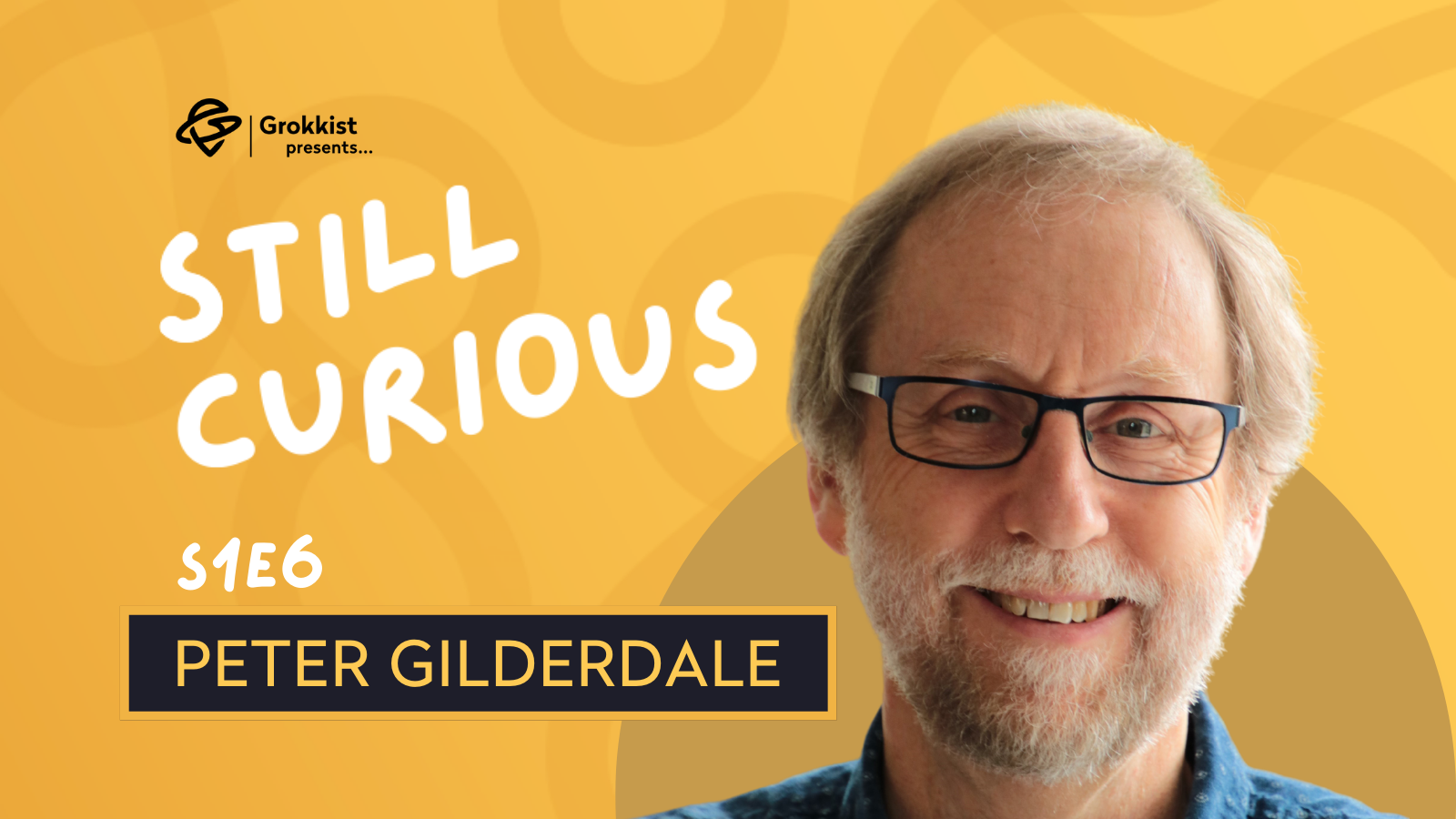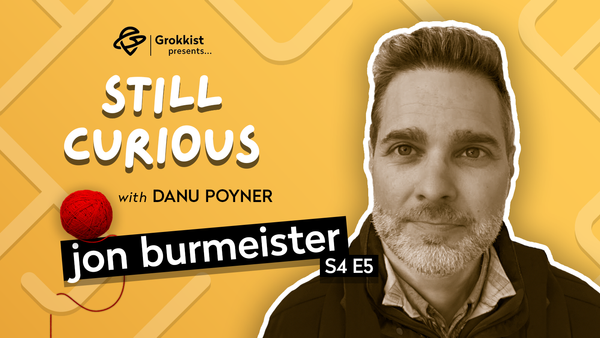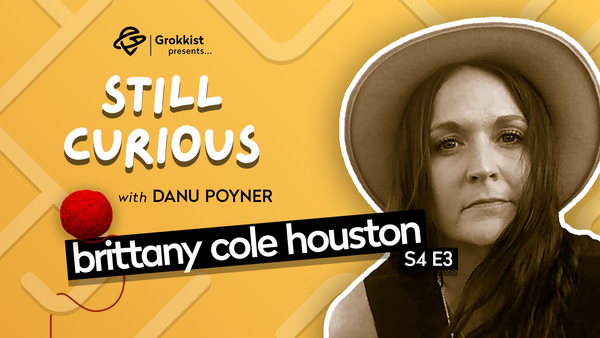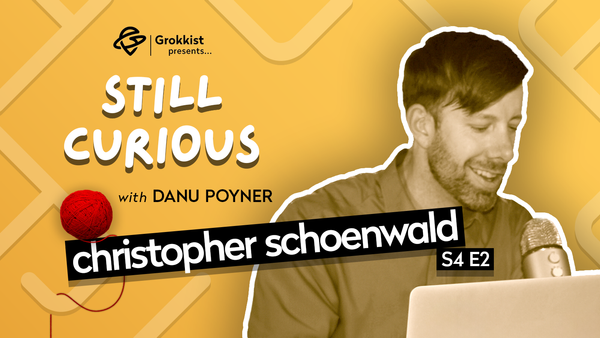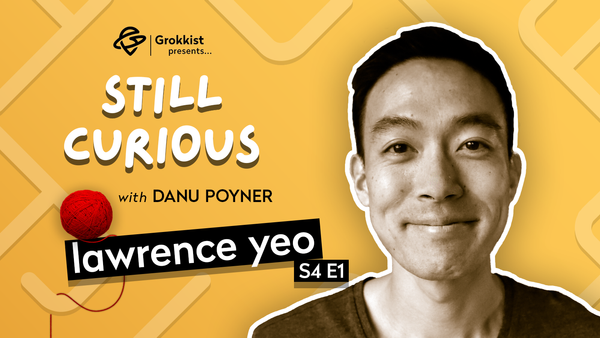Listen Now
About the Episode
Key Topics
- Why ‘learning outcomes’ and the disciplinary apparatus of a university shuts down free thinking, excitement, innovation and student-focussed education
- How an abiding interest in marrying image and text has led Peter on a life journey through calligraphy, communication design, art history and Egyptology
- How assessment gets in the way of learning and how simply removing it altogether can lead to a supportive learning culture that exudes excellence
- Peter’s observations on changing attitudes towards the arts, from a resurgence of young people’s interest in calligraphy via graffiti, to the rise of an educated middle class who no longer consider the arts necessary or valuable
Detours and Tangents
- How a timetabling clash led Peter to discover one of the world's oldest signed works of art while working on an archeological dig in Egypt
- How doing a PhD about Edwardian postcards helped Peter to connect with his family's history as immigrants
- Why it is that so many good calligraphers also turn out to be so good at playing golf
Recorded 7 October 2021
Episode Digest
Peter's squiggly career
- Peter’s parents were an artist and a writer. They migrated from England to New Zealand in the 1960s.
- As a child, Peter was always into drawing. Later, as a teenager, Peter played cricket and golf and considered doing the latter professionally for a while.
- He did lettering as part of the art curriculum at school. After leaving school he went to a boarding school in England for a couple of semesters and then to art school for one semester. There he saw examples of calligraphy posted up around the halls and cafes and thought “I could do a heck of a lot better than that”.
- Back in New Zealand, Dad had calligraphy pens so Peter started to try it out and found he quickly became quite good at it. He changed from thinking he was going to be an artist to thinking he was going to be a calligrapher.
- When Peter started university, he was intending to study history and art history but the timetables didn’t work so he ended up doing ancient history and subsequently pursued an emerging interest in Egyptology.
- When he did his masters degree he wanted to study the art history of ancient Egypt but the art history department wasn’t interested in this because they insisted that if you didn’t know who the artist was, you couldn’t study them. So Peter went to the ancient history department instead. This led Peter to spend a few months on an archaelogical dig in Egypt where the group discovered one of the world’s oldest signed works of art.
- While living in Denmark during the 1980s, Peter was influenced by Danish design and saw the potential that design could have to affect people. He became interested in design history.
- He started a PhD in Egyptology through Durham Unviersity. The university closed down as part of 1980s reforms in Britain, so Peter had a decision to make – do I finish off an egyptology PhD or do I go into calligraphy?
- Peter had an offer from University of Auckland to finish the PhD and then take up a position afterwards, or to do part-time teaching of art history at Auckland Technology Institute. He opted for the latter because “the education was so much better” at ATI.
- Peter remained teaching at ATI (which later became Auckland University of Technology) until he retired in 2021.
- In his 50s, Peter undertook a PhD in design history at AUT. He had resisted the idea of doing a PhD just for career reasons, but had developed a personal interest in collecting Edwardian ‘Hands Across the Sea’ postcards and how they reflected the experience of people who were parted through immigration the Edwardian period. So he took up the PhD to systematically investigate this interest and to connect to his family’s experience of coming out to NZ as immigrants in the 1960s.
- Peter later became Head of Research at the Art & Design School at Auckland University of Technology, where he was responsible for administering some of the bureaucratic systems he is critical of. He took up the challenge of not falling into deep cynicism about it all but instead finding opportunities to support and develop colleagues in ways that don’t feel completely foreign and unpleasant to them. “How can you keep the university system happy while not losing your soul?”
- Now retired from the university, Peter is a freelance calligrapher and children’s book illustrator. Peter’s parents wrote a popular series of children’s books called The Little Yellow Digger, so Peter has been writing more stories in that series while working on various artistic projects and collaborations.
The Red Thread
- What Peter enjoys most is the marrying of image and text. Calligraphy, graphic design and communication design is where those things intersect.
- Peter brings a historian’s sensibility to his various interests, “engaging with the past as a way of finding other people.”
- He is primarily concerned with the ethical dimensions of education. Are the people coming out of the university going to be “good people who know how to be curious, creative, excited? All of that's what you want, what you don't want is people who just want to tick boxes.”
Decisive moments
- While deciding whether to pursue Egyptology or calligraphy at a key moment in his life, something a friend once said came back to him: “at some point, mate, you're going to have to decide whether you're a generalist or a specialist.” Peter realised he didn’t want to be a specialist. The Egyptology avenue, while fascinating, was taking him towards a narrow point when really he needed creatively to be going broader.
- Peter turned down the relative certainty of a permanent position as a university lecturer in favour of teaching at a technical institute, because in his view the education was better.
- Eventually the institute he was working at converted to a university so he ended up being a university lecturer anyway, but he witnessed a decline in educational quality as the university structures began to inevitably shut down innovation and free thinking.
Synthesising for strength
- “I write and I make”. His parents were an artist and a writer, so “I’ve always had those two things going alongside each other.” He is interested in using different lettering in any kind of context.
- Peter notices that a lot of good calligraphers are also good golfers. A golf swing is a lot like calligraphy. You have to set yourself up and then get your head out of it so the line comes out fluidly, otherwise every little bit that goes wrong in the process gets magnified and the swing gets worse. “Mentally, it’s exactly the same process.”
- Peter combines his interests in marrying images and text with his historian’s sensibility, research skills and concern for the ethical dimensions of education to create excitement in his students, connecting them to the history of design as a way to find other people and inspire their own creative expression.
- Peter is pleased by the recent resurgence of interest in calligraphy among young people via calligraffiti – the merging of calligraphy and graffiti in popular culture.
How Peter likes to learn
- “In as unstructured a way as possible. I just find what I’m interested in and then go for it.”
- “I’m not at all systematic. I don’t set goals and try to achieve them. I just find how it connects with other things I’m interested in and think about it.”
- “My experience of learning comes from getting people excited about things and then waving goodbye as they go sailing off into whatever it is they're interested in.”
Reflections on practice
- Calligraphy is about taking a pen and using movement to create a shape. No two shapes are going to be the same, and this individuality is a unique quality to the calligraphic mark. It’s quite different to graphic design, which is about using a finished form of type together with other elements to communicate something.
- Calligraphy is “always about finding something out. You never know what the piece is going to be until it's finished.”
- Peter sees value in taking a historical approach to teaching creative arts. “The worst way to try and teach people to be creative it's to look at what's happening now, because there's so much pressure to conform to what's fashionable that people get very uncritical, but if you look at things historically, you can actually pull them apart and think about them and look at the bits and so on in a more analytical way, and you can actually train your critical abilities in that arena.”
- Peter sees his role as a teacher is to inspire people and get them excited. “I don't want to be the person that people can't get past.” Some teachers are so dominant that their students can never beyond what they do. “What you're trying to do is to encourage them to have the confidence to find their own way, but at the same time you try to model a certain enthusiasm about the things that you believe.”
- Peter notices that the over-systemisation of university curriculum structures can dampen the excitement of learning. “At the end of it, yes you may have a toolbox, but are you actually very enthused about using it?”
- Peter thinks universities have lost their way because they have all specialists and no generalists. “When you're trying to weave things together and make connections between subjects, you need people who are reading widely across many different subject areas who can connect those things together.”
- Peter’s experience is that formal assessment gets in the way of learning. It’s more effective to “have a group of people around you who are learning and pushing one another in the best possible sense. If you get that culture of supported learning and people wanting excellence not just for themselves in a possessive way, but wanting to be in a place that is exuding excellence, that's where the magic happens. Assessment just gets in the way of that.”
- Peter removed assessment from his lectures altogether and found students became more excited about the actual content. “It was a small victory within losing a larger war.”
Stuff We Mentioned
People
- Peter's calligraphy on Instagram
- Peter's polarising article in The Spinoff
Books
Organisations
Blogs
Audio Highlights
Episode appetiser - how university structures shut down free thinking and innovation (41 sec)
Peter explains design history to 10yo (48 sec)
Why calligraphers are good golfers (58 sec)
What's involved in being a professional calligrapher (58 sec)
What's the difference between typography and calligraphy (56 sec)
About Peter Gilderdale

Connect with Peter
Interactive Transcript
Note: This is a machine-generated transcript and may contain errors.



